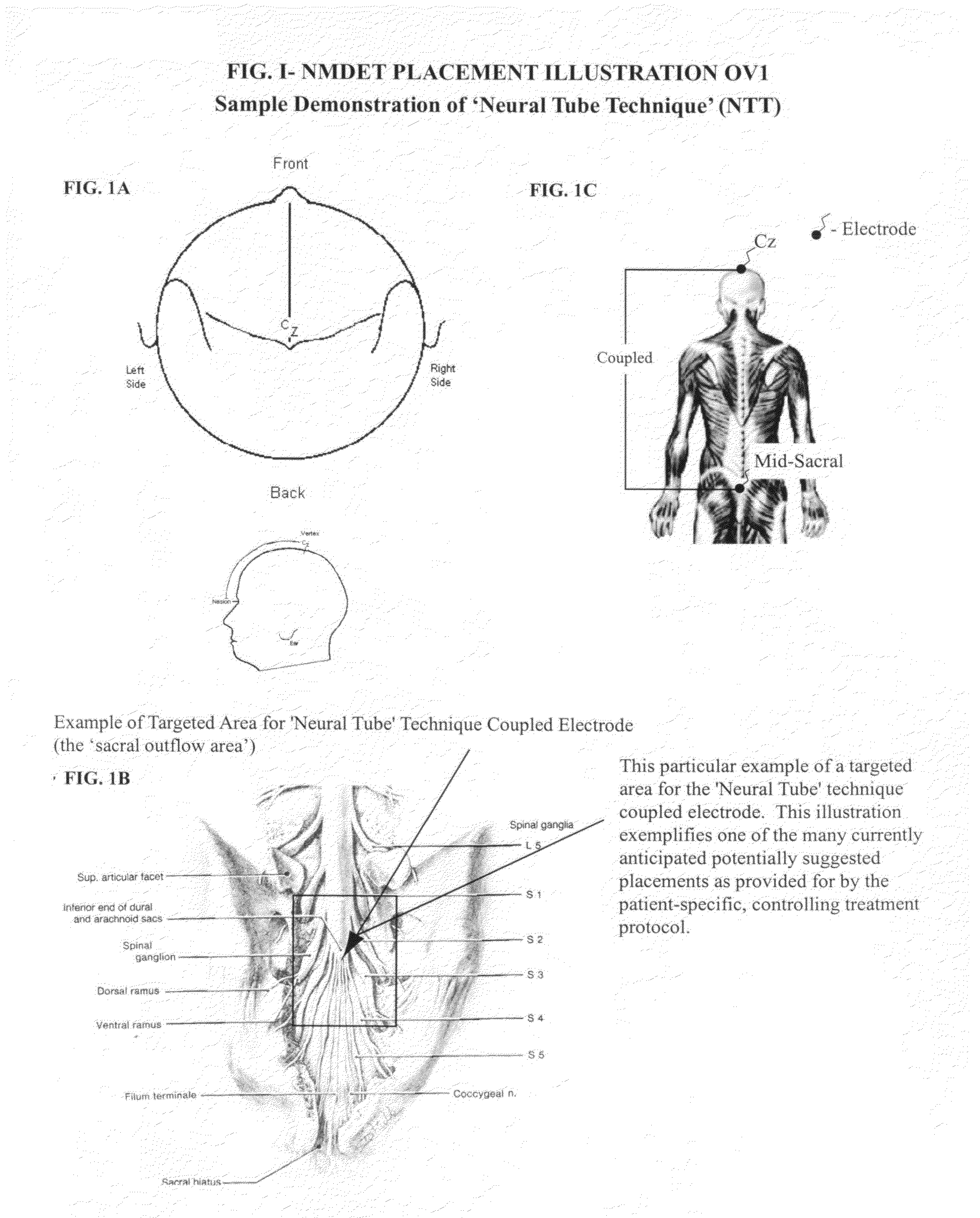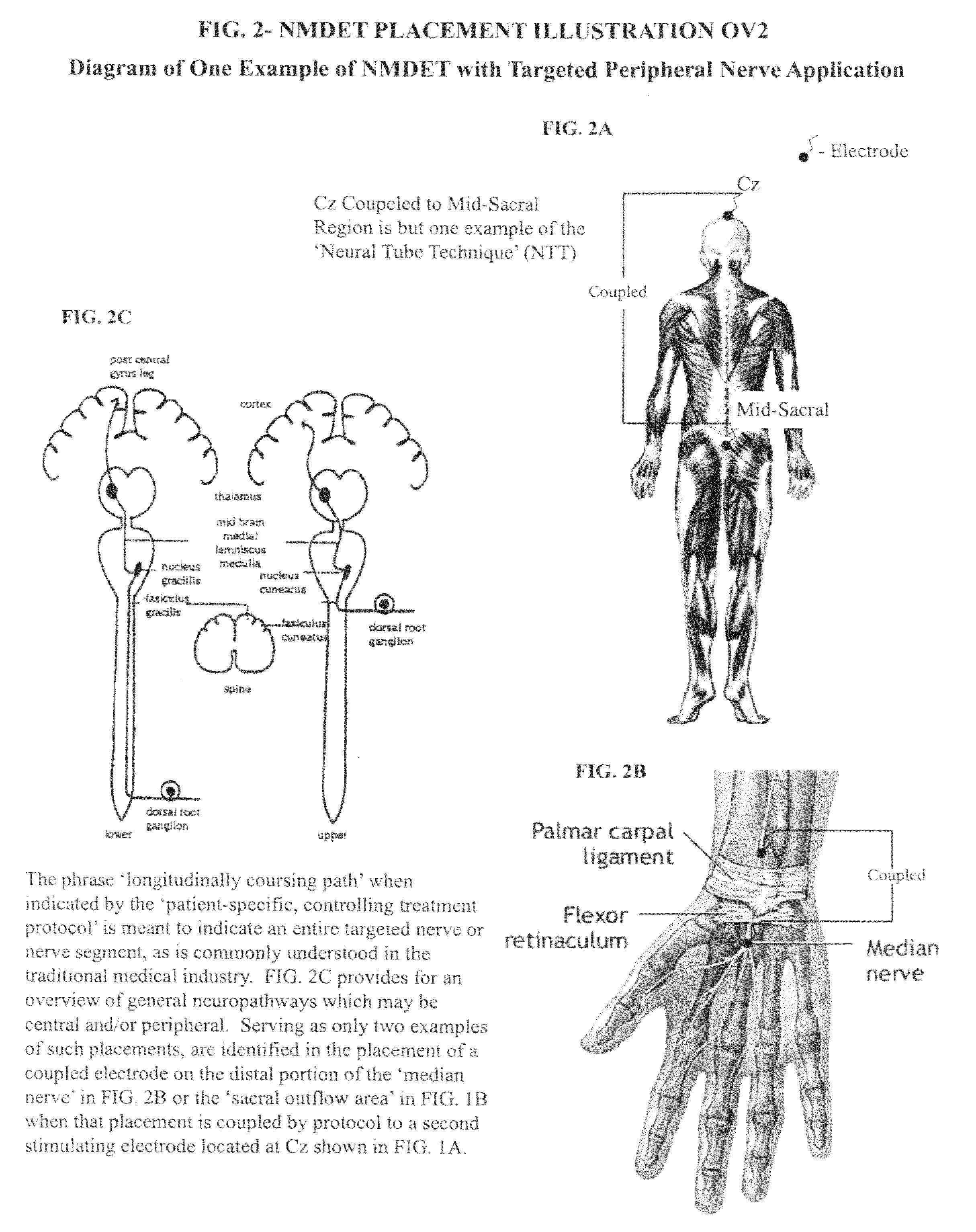Coupled neuraxial mesoscopic desynchronization electrostimulation therapy (cNMDET) method
a mesoscopic desynchronization and electrostimulation therapy technology, applied in the field of coupled neuraxial mesoscopic desynchronization electrostimulation therapy (cnmdet) method, can solve the problems of no concomitant (contemporaneous) patient physiologic monitoring capacity, woefully deficient apparatus/device design with the recommended treatment protocol, and the typical range of claims made for these devices and related methodologies is so conspicuously vas
- Summary
- Abstract
- Description
- Claims
- Application Information
AI Technical Summary
Benefits of technology
Problems solved by technology
Method used
Image
Examples
Embodiment Construction
[0045]In its preferred embodiment, FIGS. 1, 2 and 3 refers to illustrative configurations of those anticipated for one or more therapeutic electrostimulatory channels comprised of two electrodes per electrostimulatory channel electronically coupled for the purpose of delivering therapeutic electrostimulation either unidirectional or bidirectional comprised of patterns that include varying alternating polarities, varying intensities, pulse-widths and waveform patterns (formulated mixture of square waves, trains of square waves and / or spikes) to deliver / utilize this novel method known as the Coupled Neuraxial Mesoscopic Desynchronization Electrostimulation Therapy (cNMDET) in accordance with the controlling treatment protocol designed to reparatively modulate the central nervous system (CNS) [regions of the brain, spinal cord and intervening structures including, but not limited to, the underlying (contributory) clinicopathologic mechanisms of the autonomic nervous system (ANS)] and c...
PUM
 Login to View More
Login to View More Abstract
Description
Claims
Application Information
 Login to View More
Login to View More - R&D
- Intellectual Property
- Life Sciences
- Materials
- Tech Scout
- Unparalleled Data Quality
- Higher Quality Content
- 60% Fewer Hallucinations
Browse by: Latest US Patents, China's latest patents, Technical Efficacy Thesaurus, Application Domain, Technology Topic, Popular Technical Reports.
© 2025 PatSnap. All rights reserved.Legal|Privacy policy|Modern Slavery Act Transparency Statement|Sitemap|About US| Contact US: help@patsnap.com



